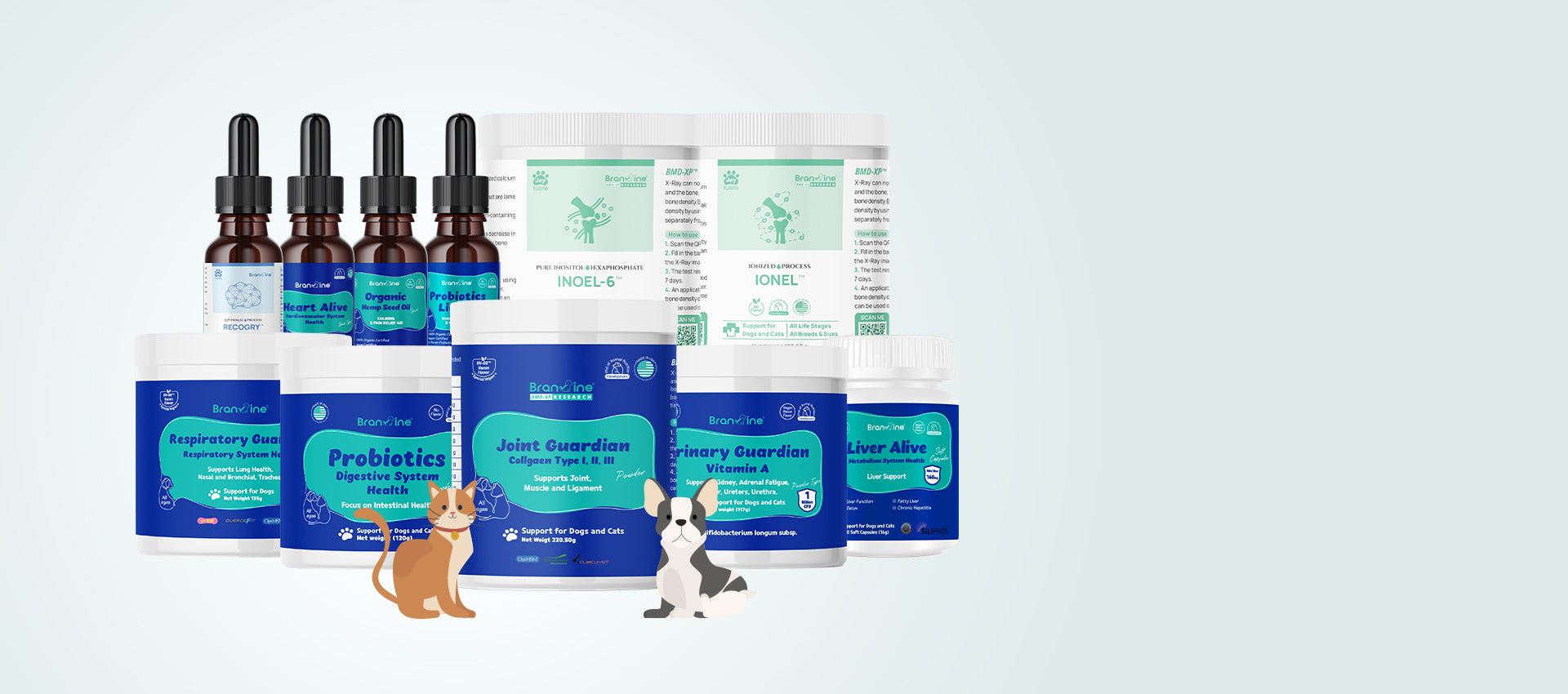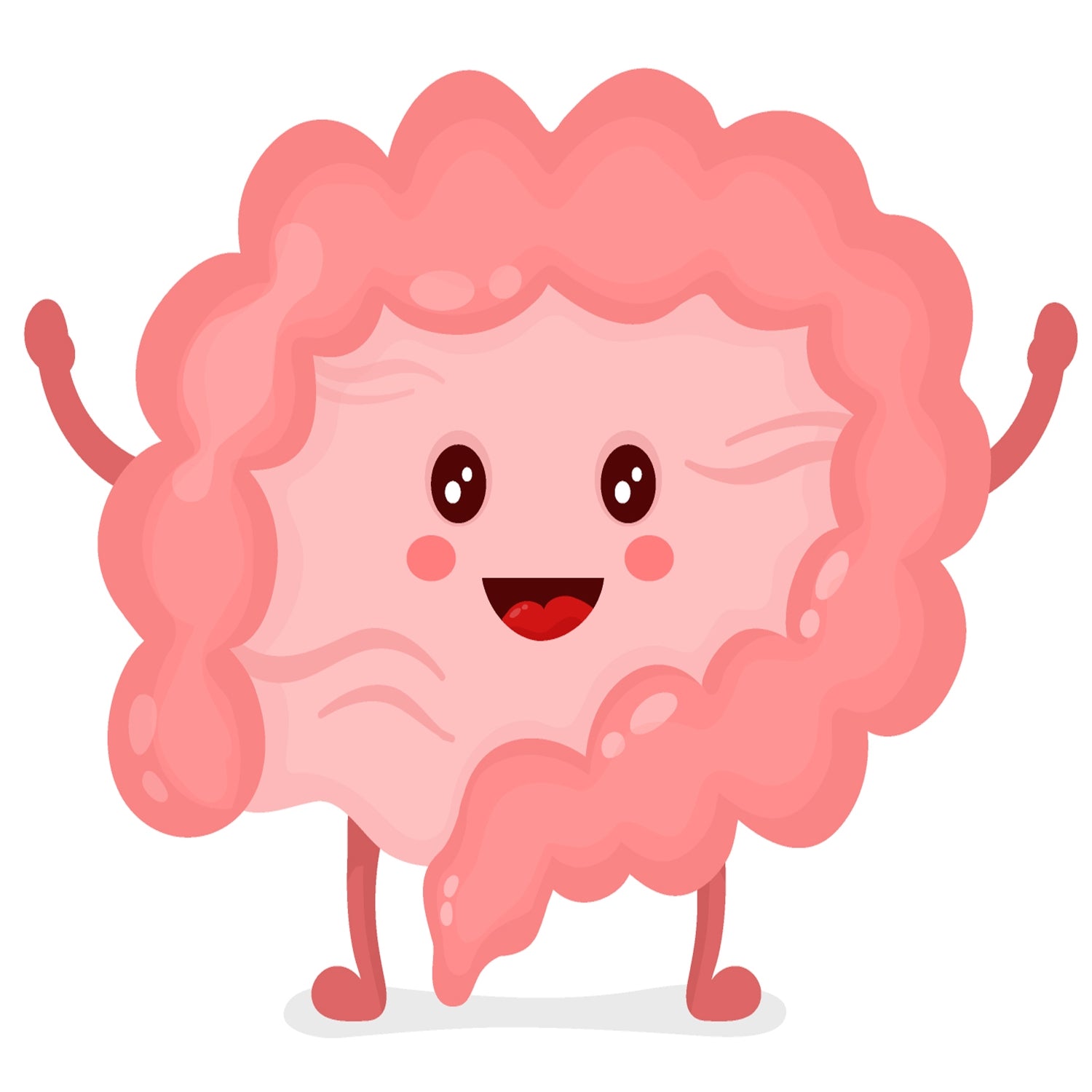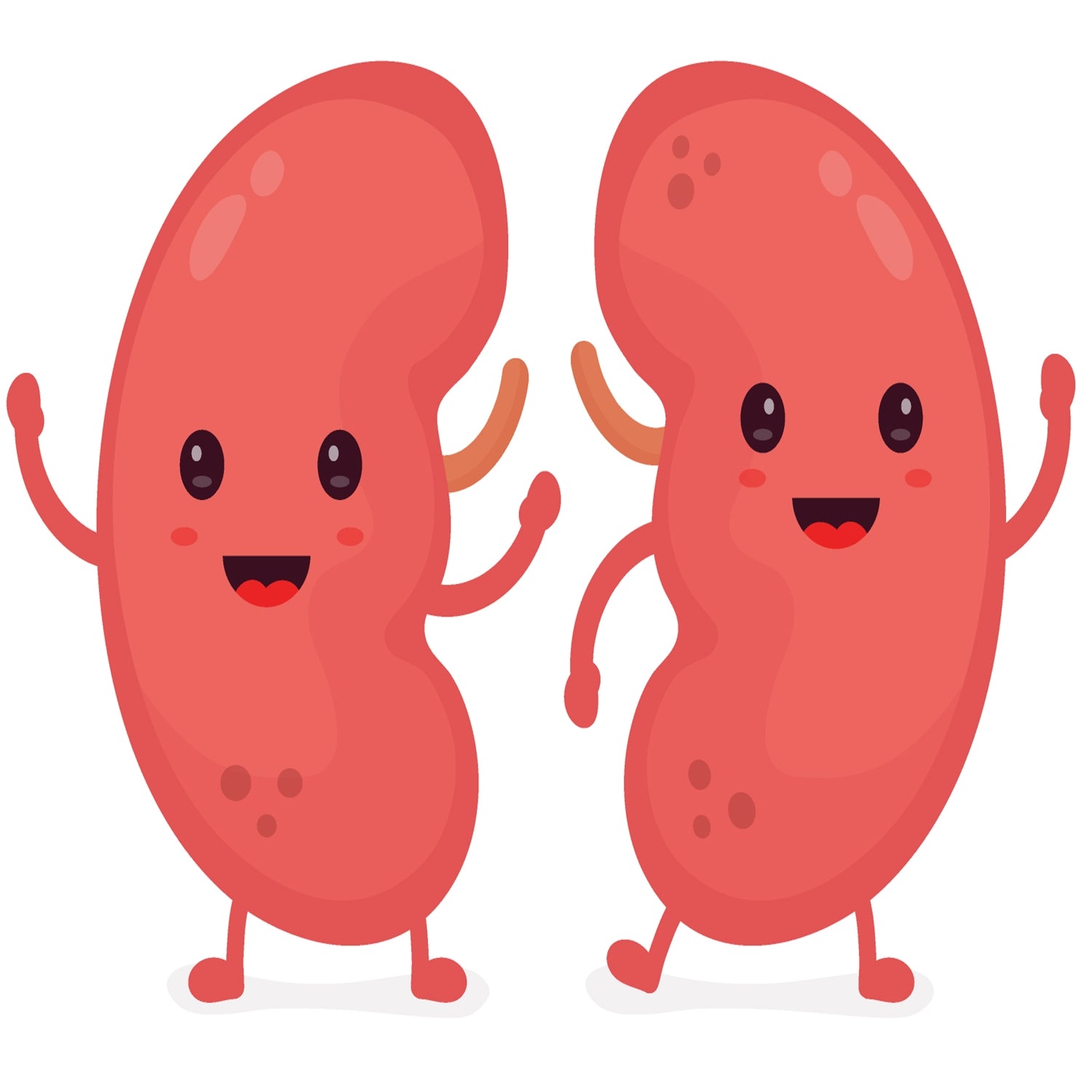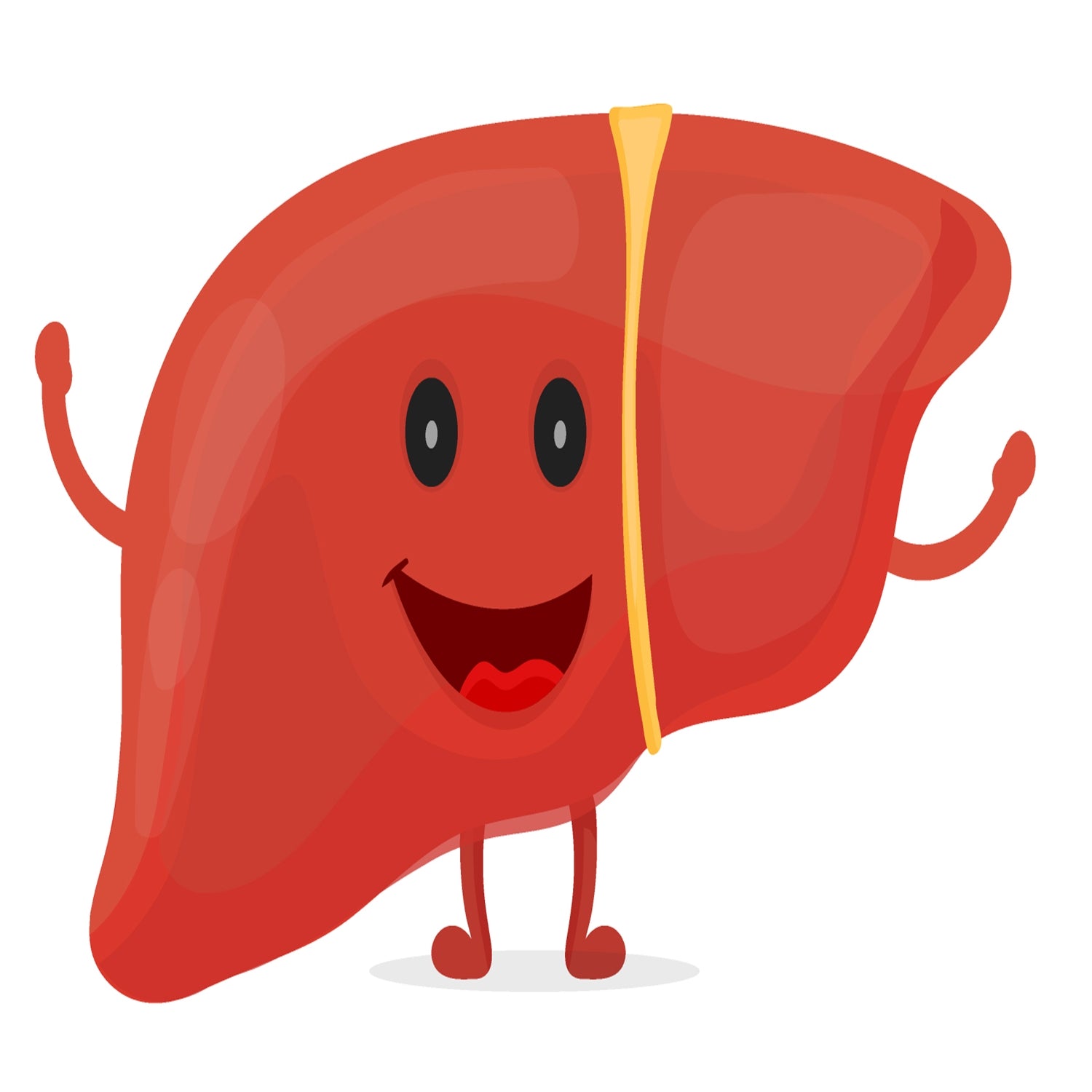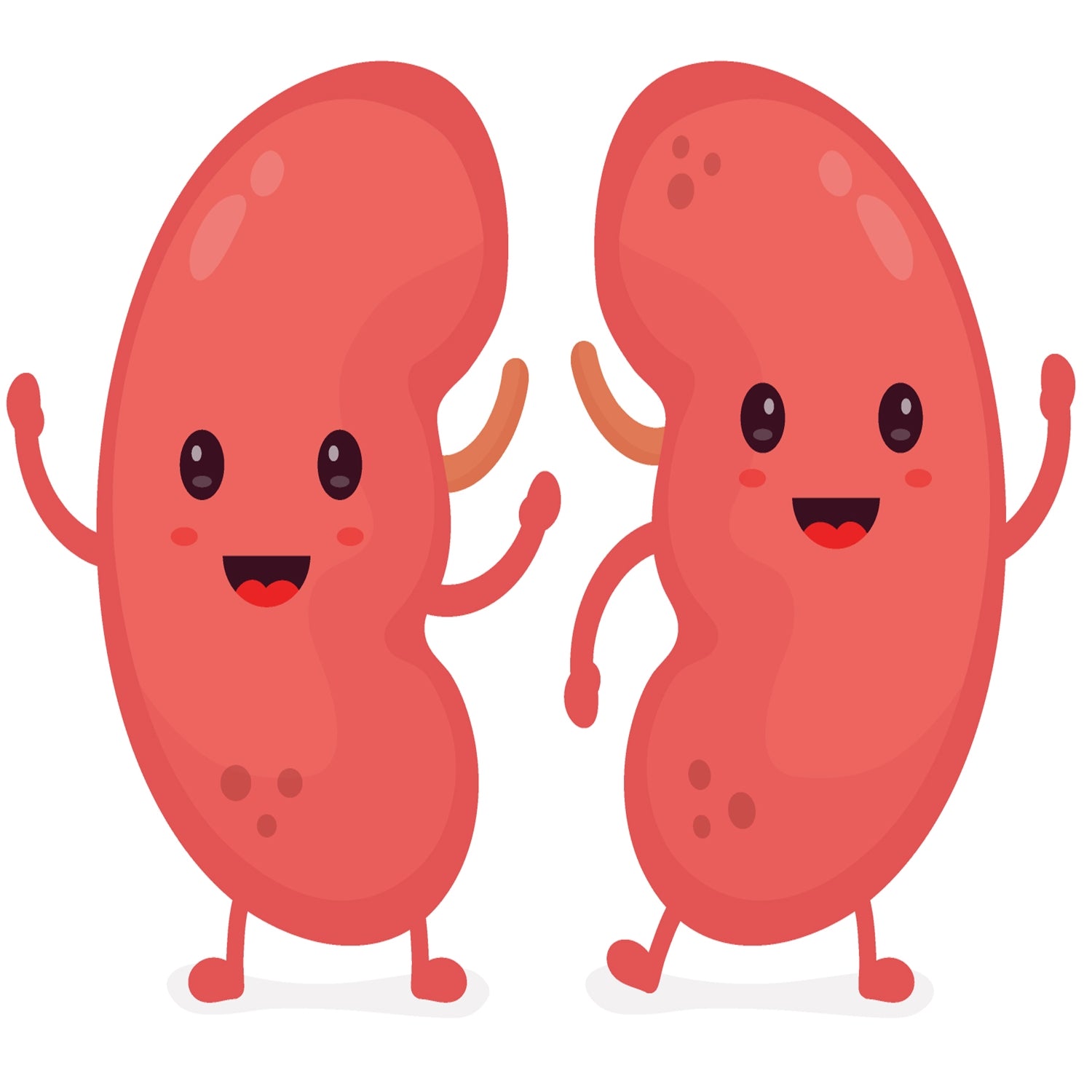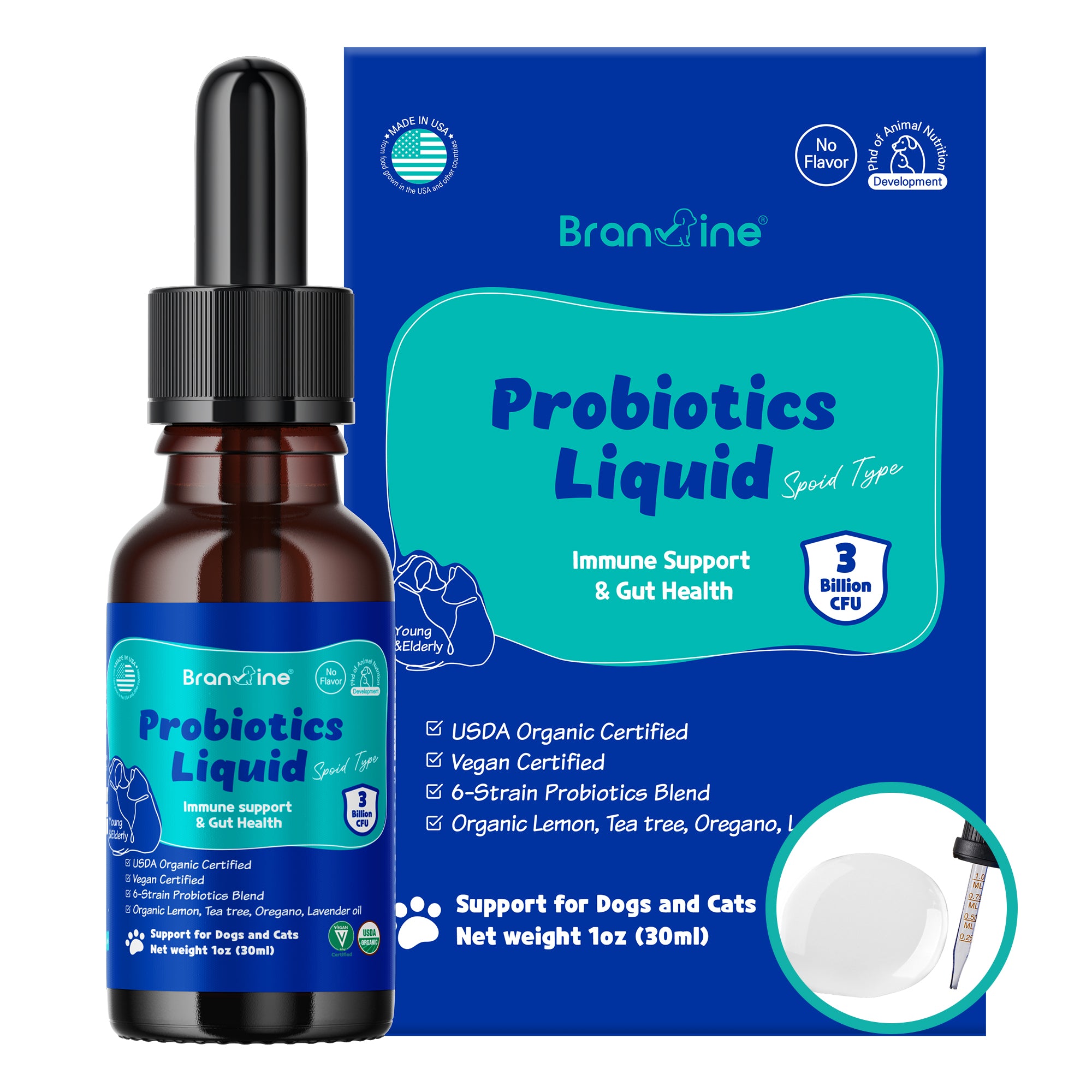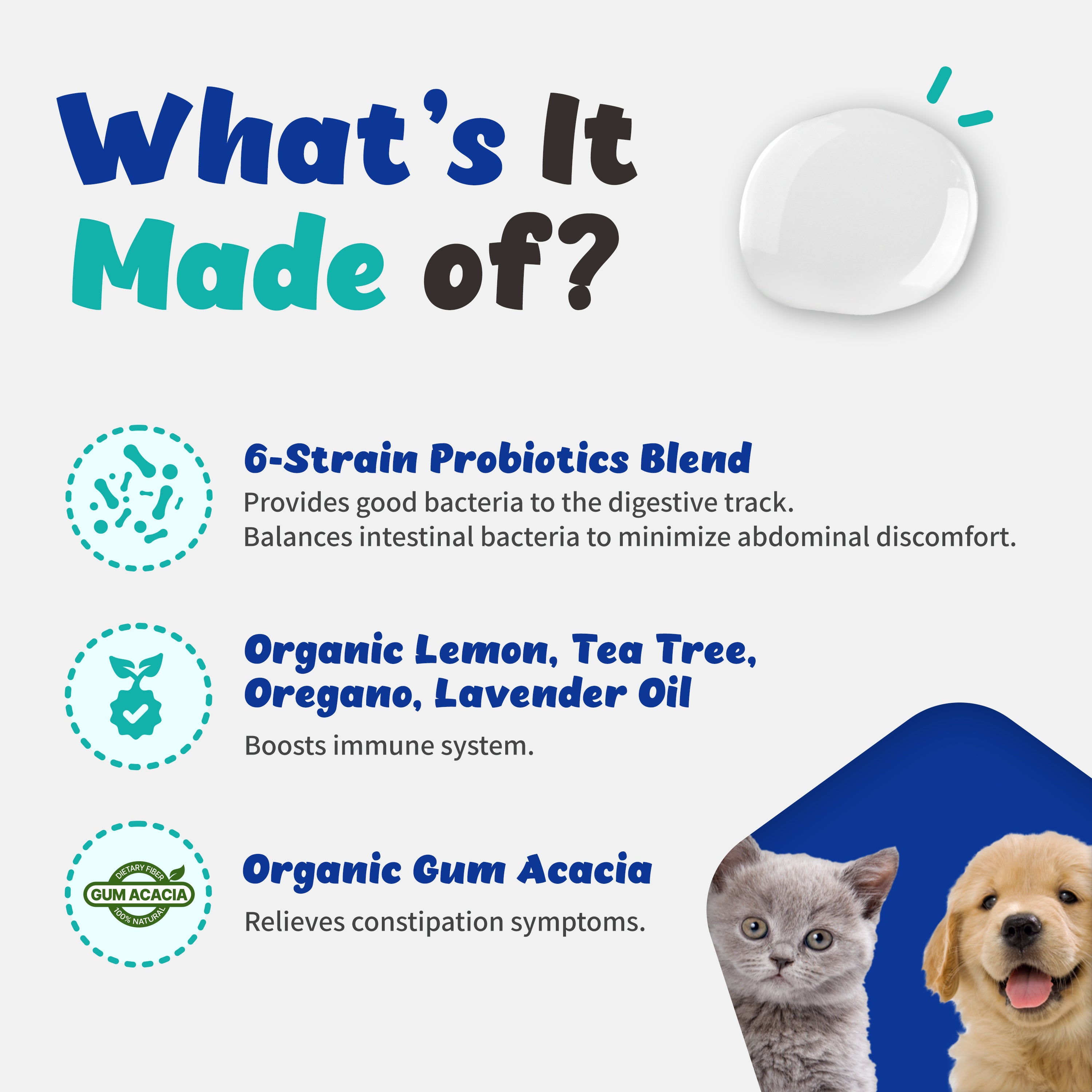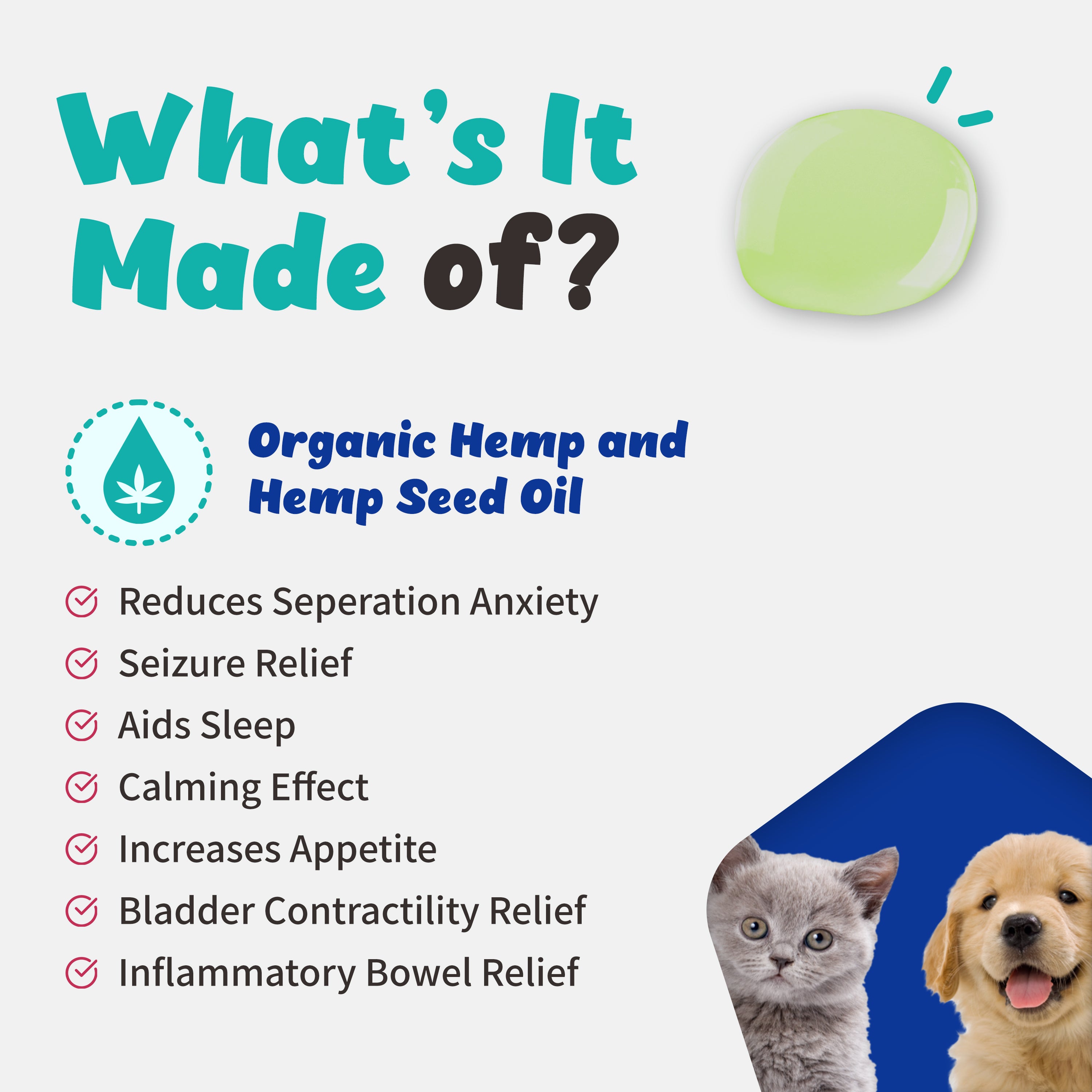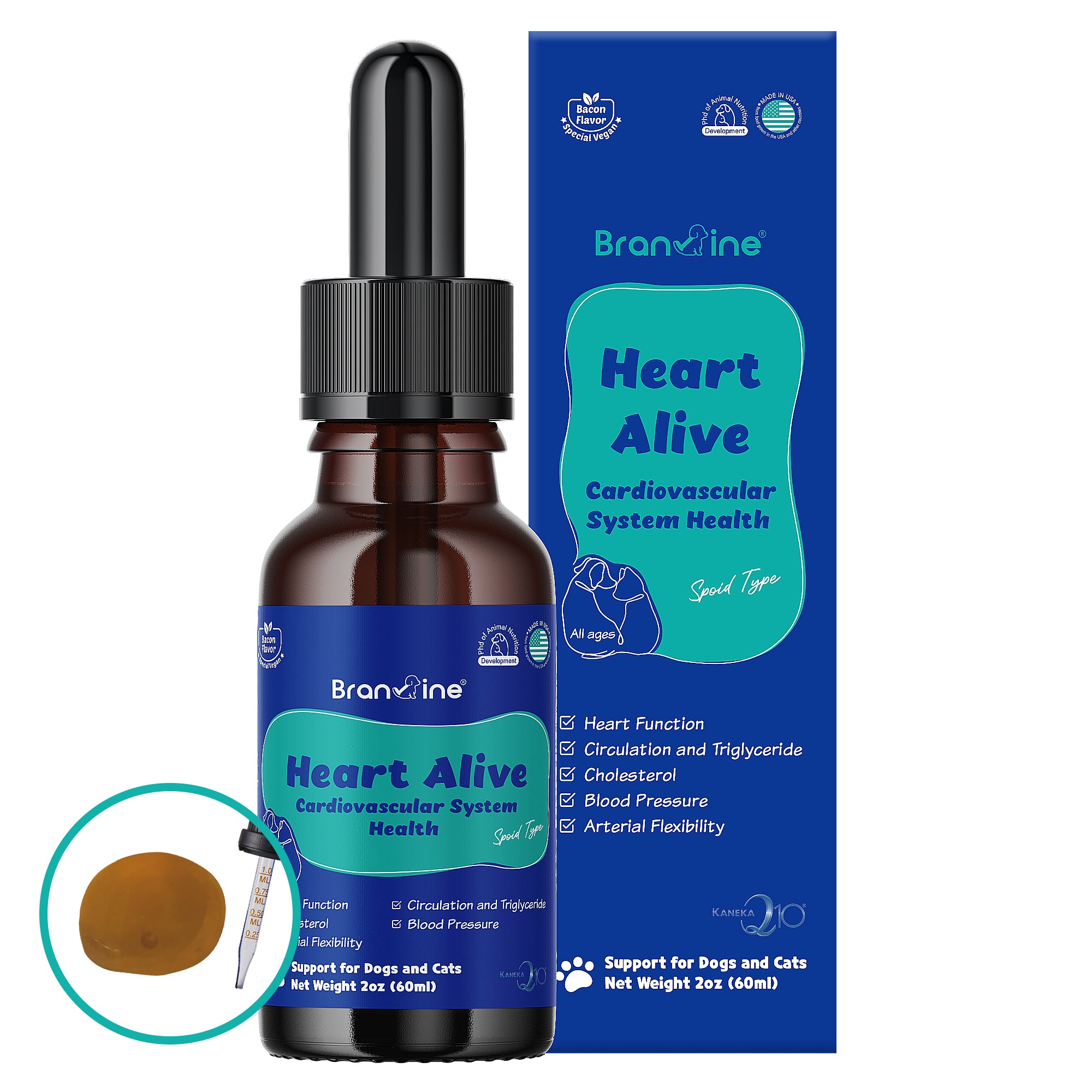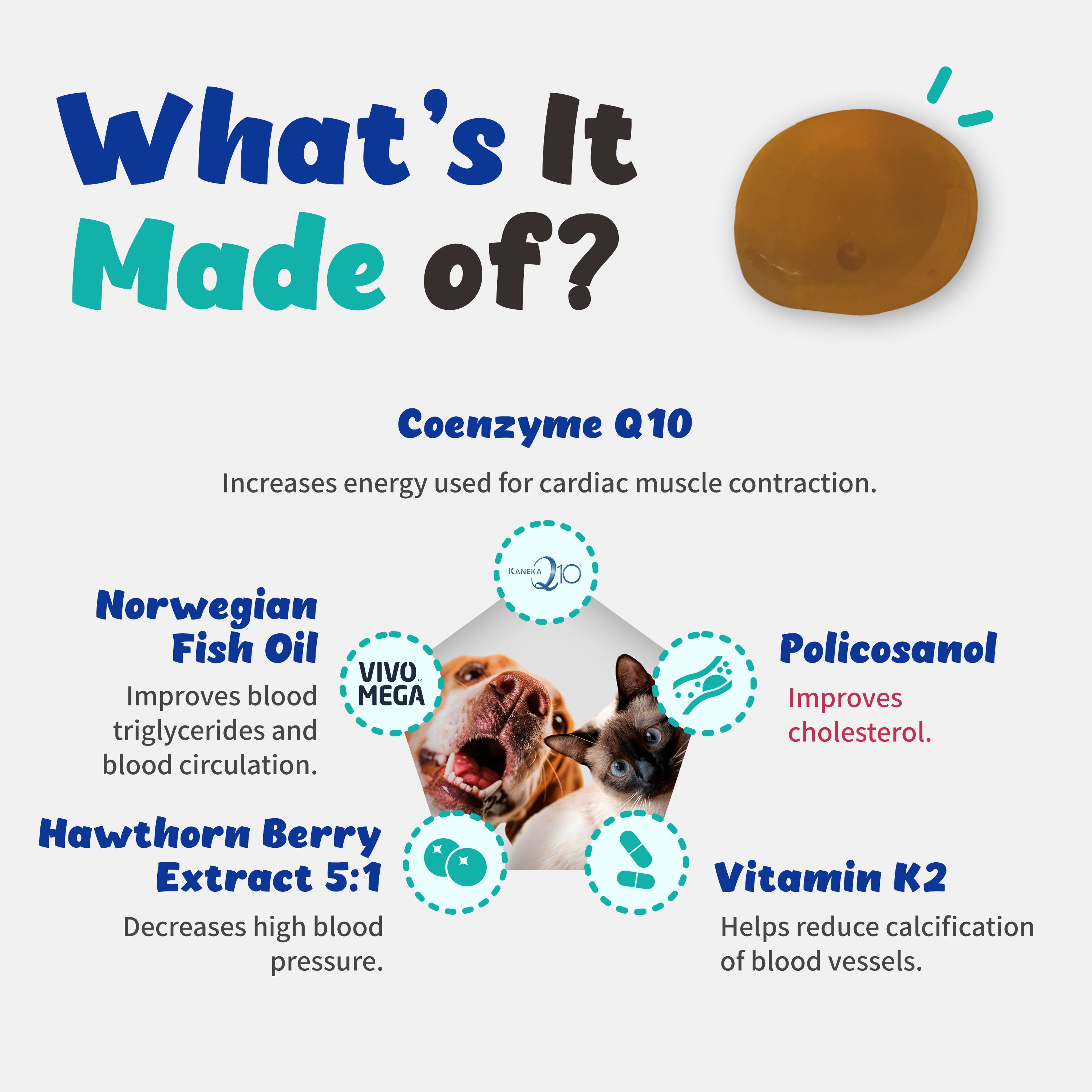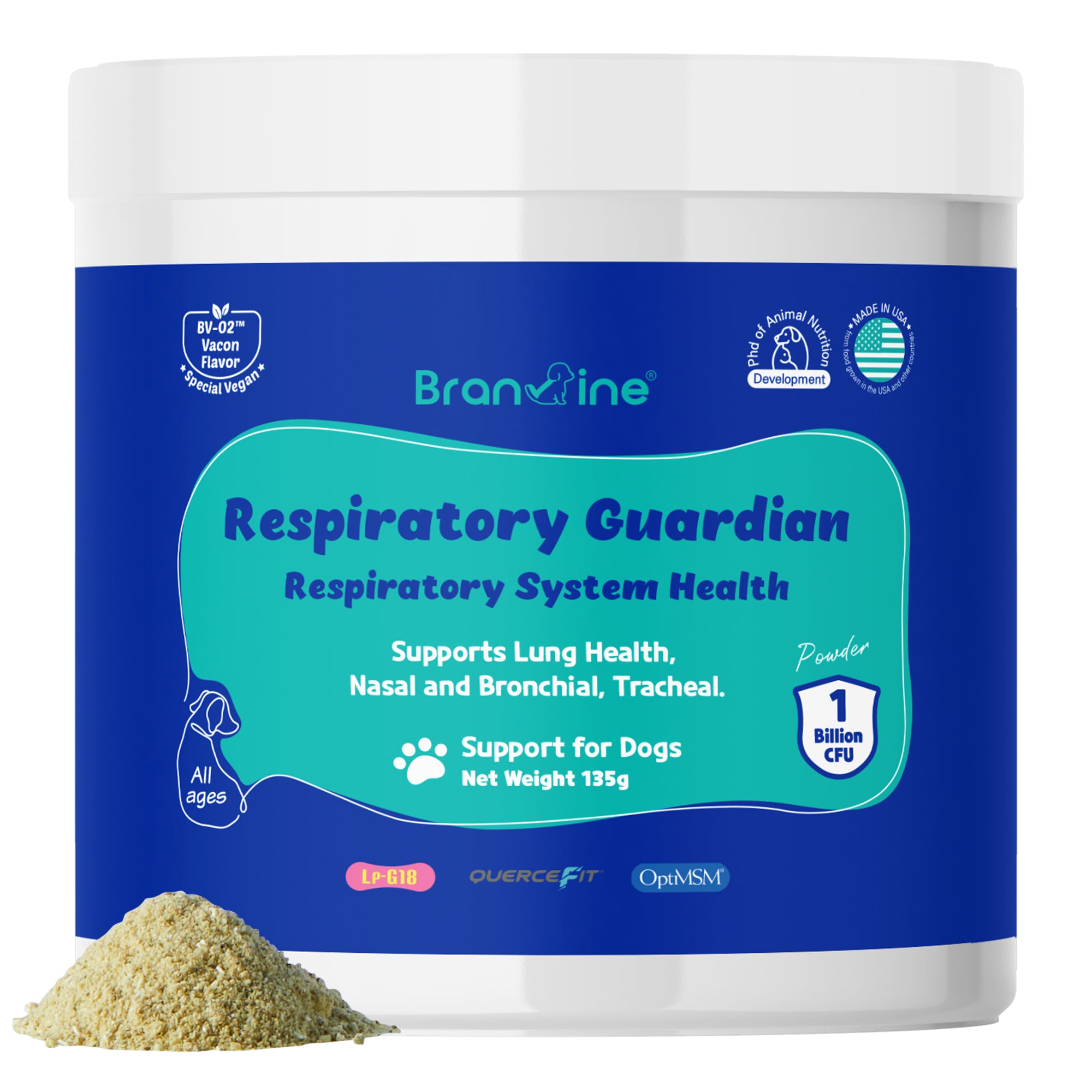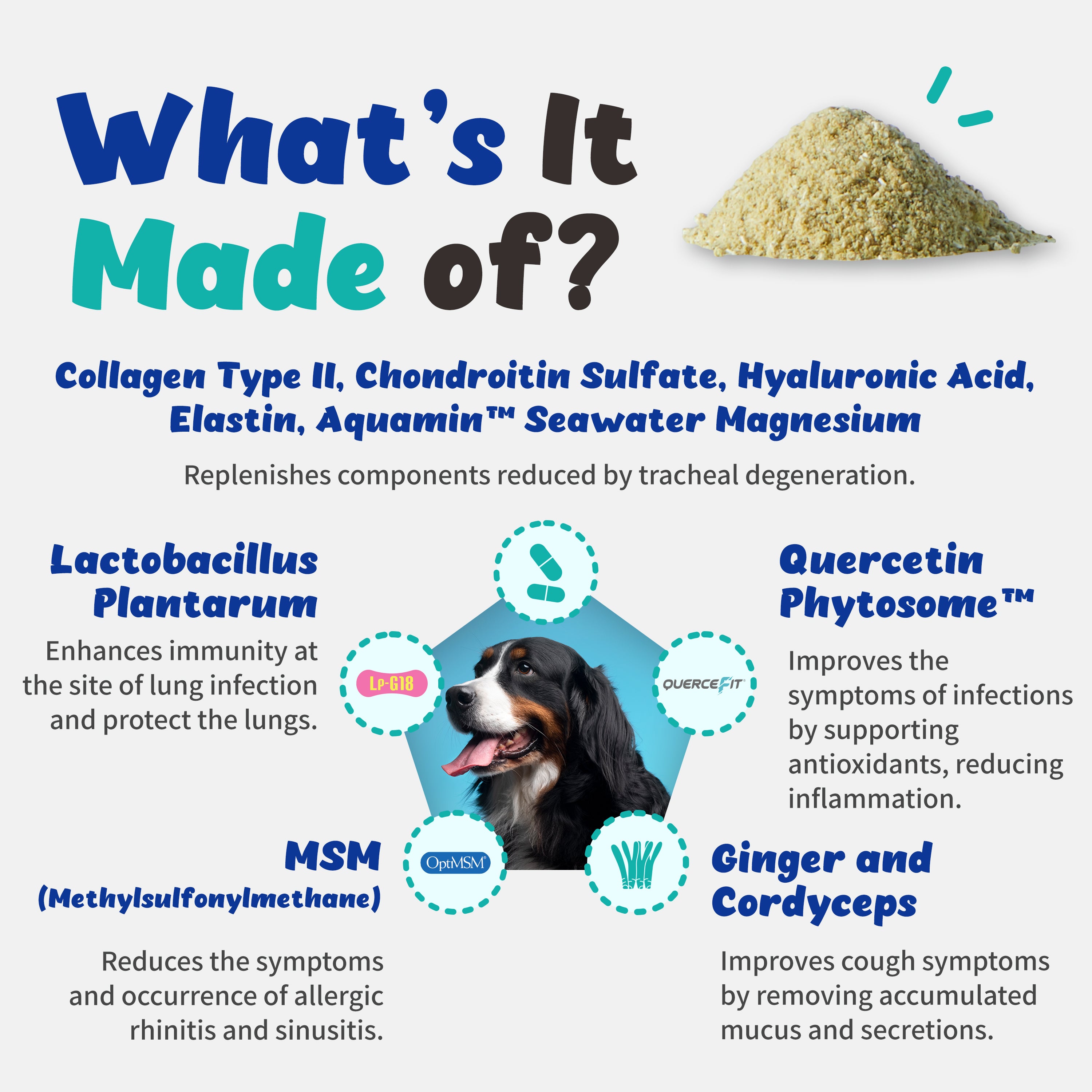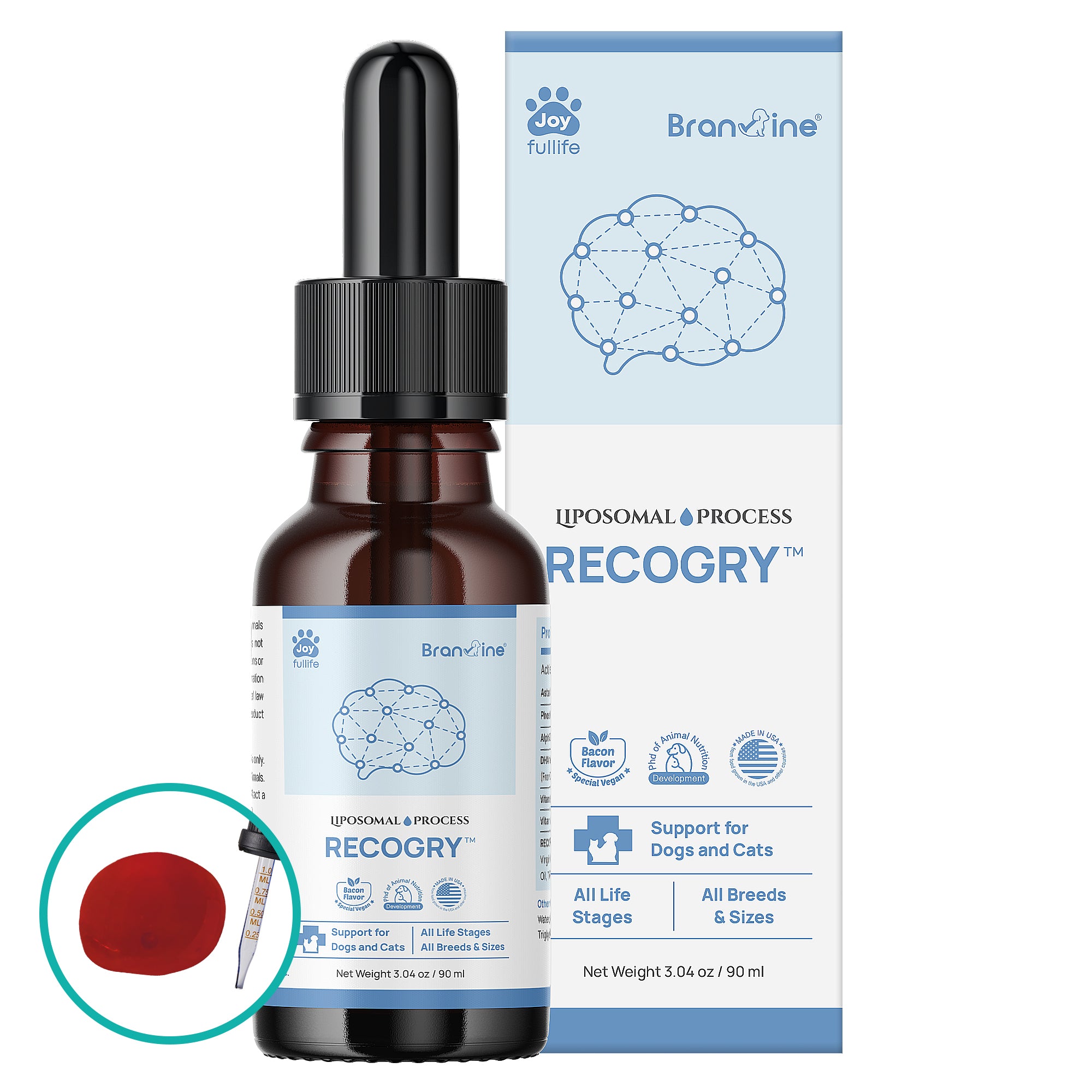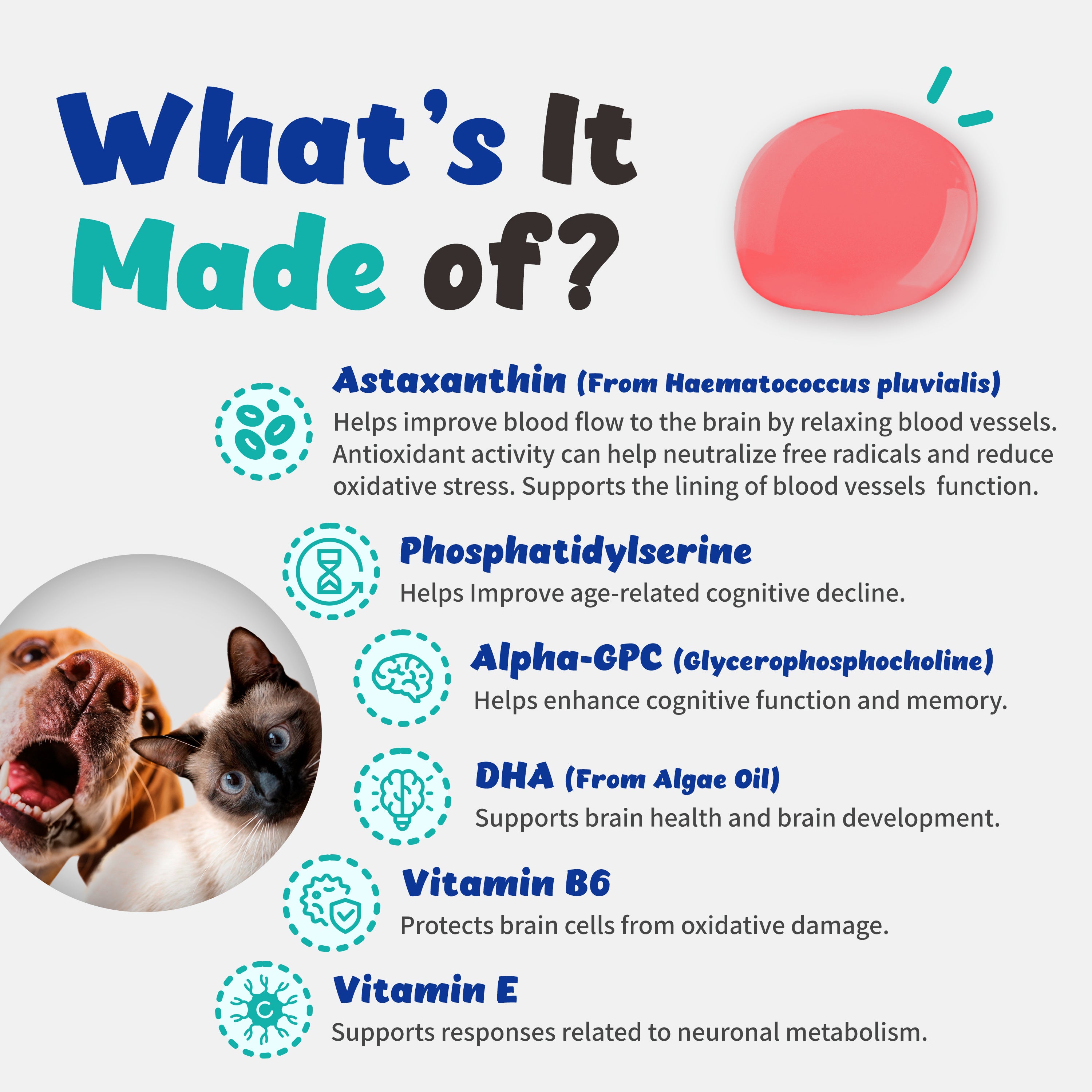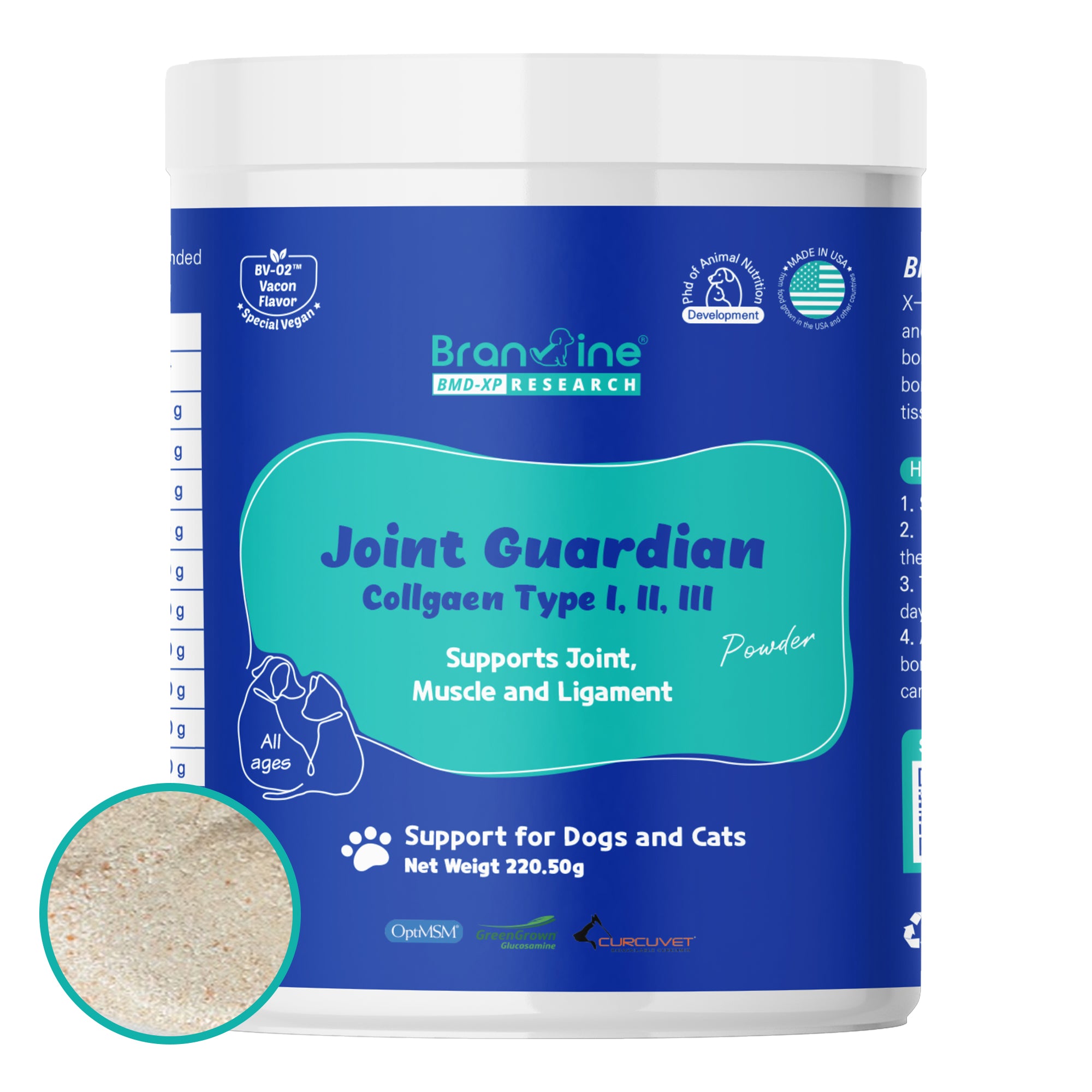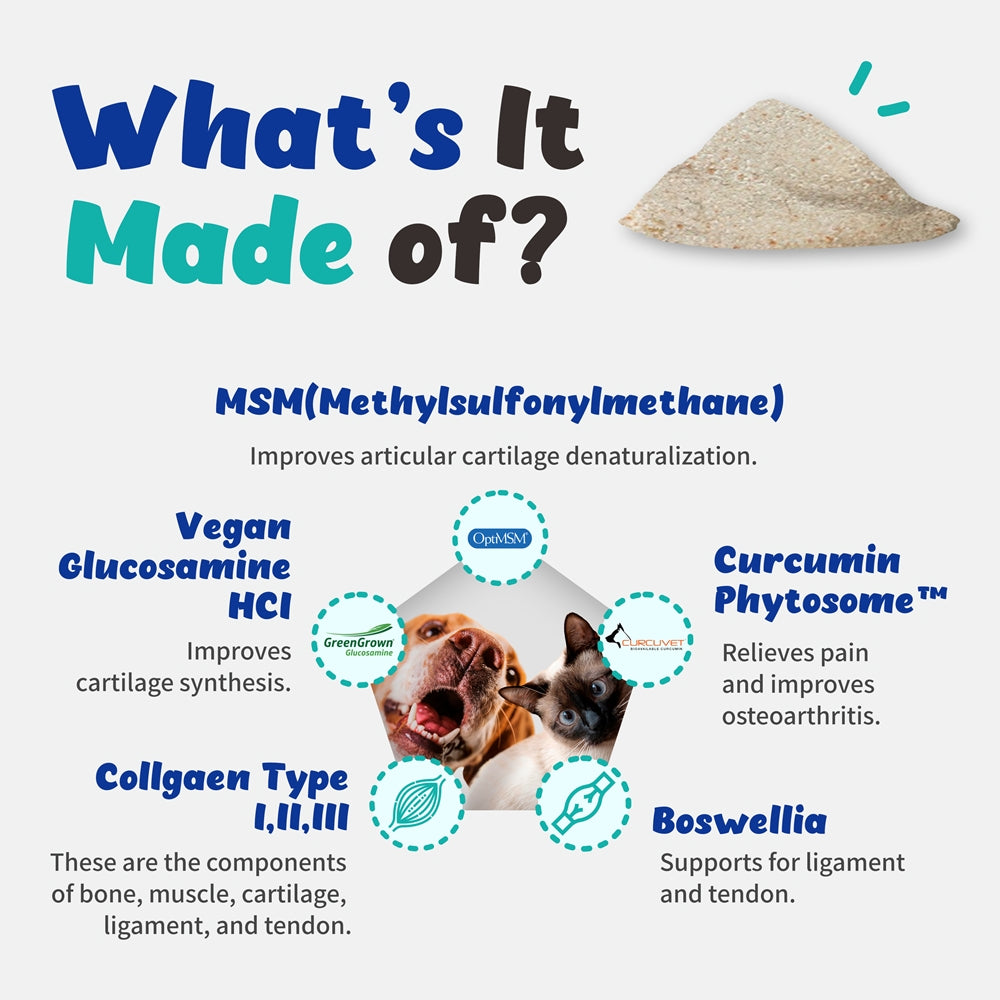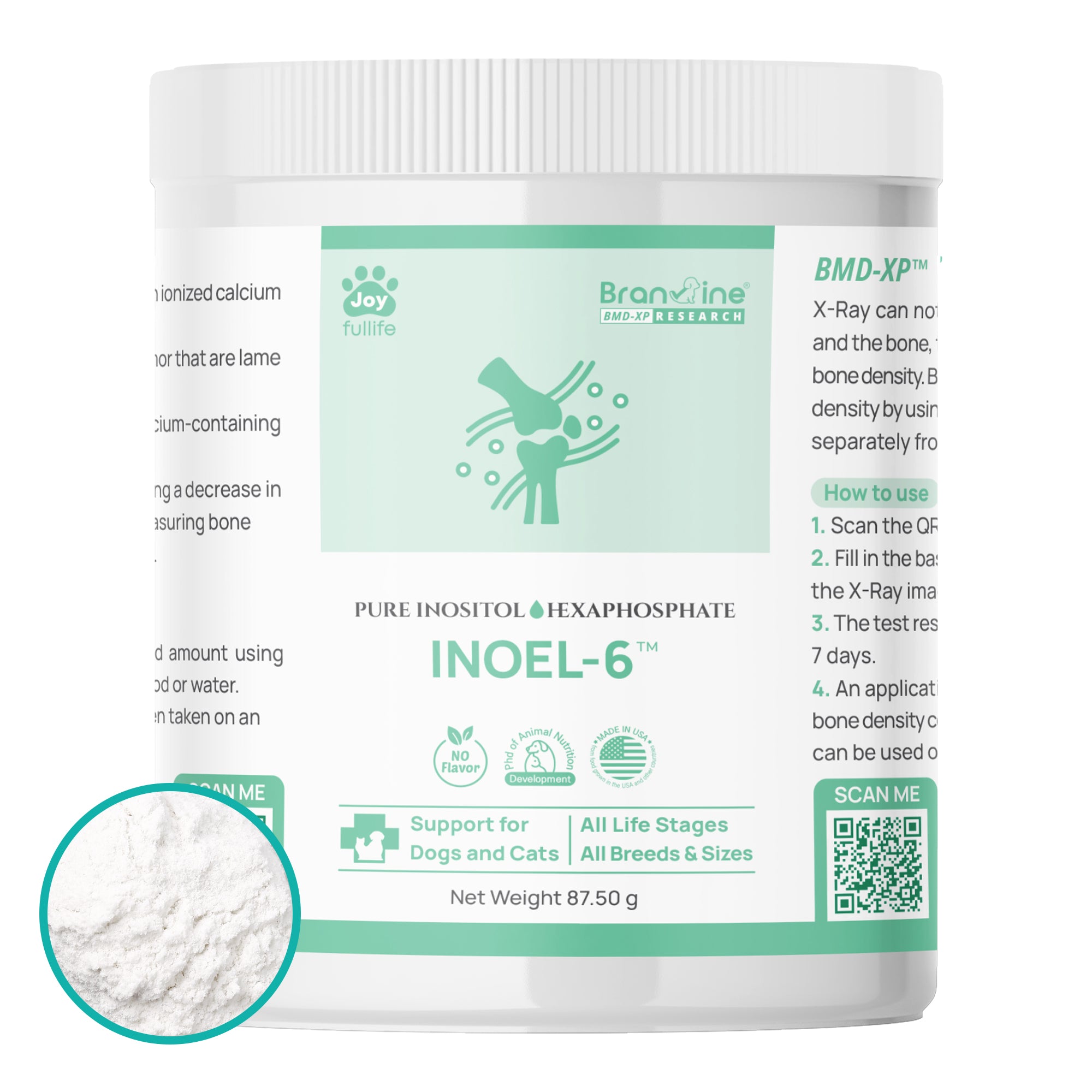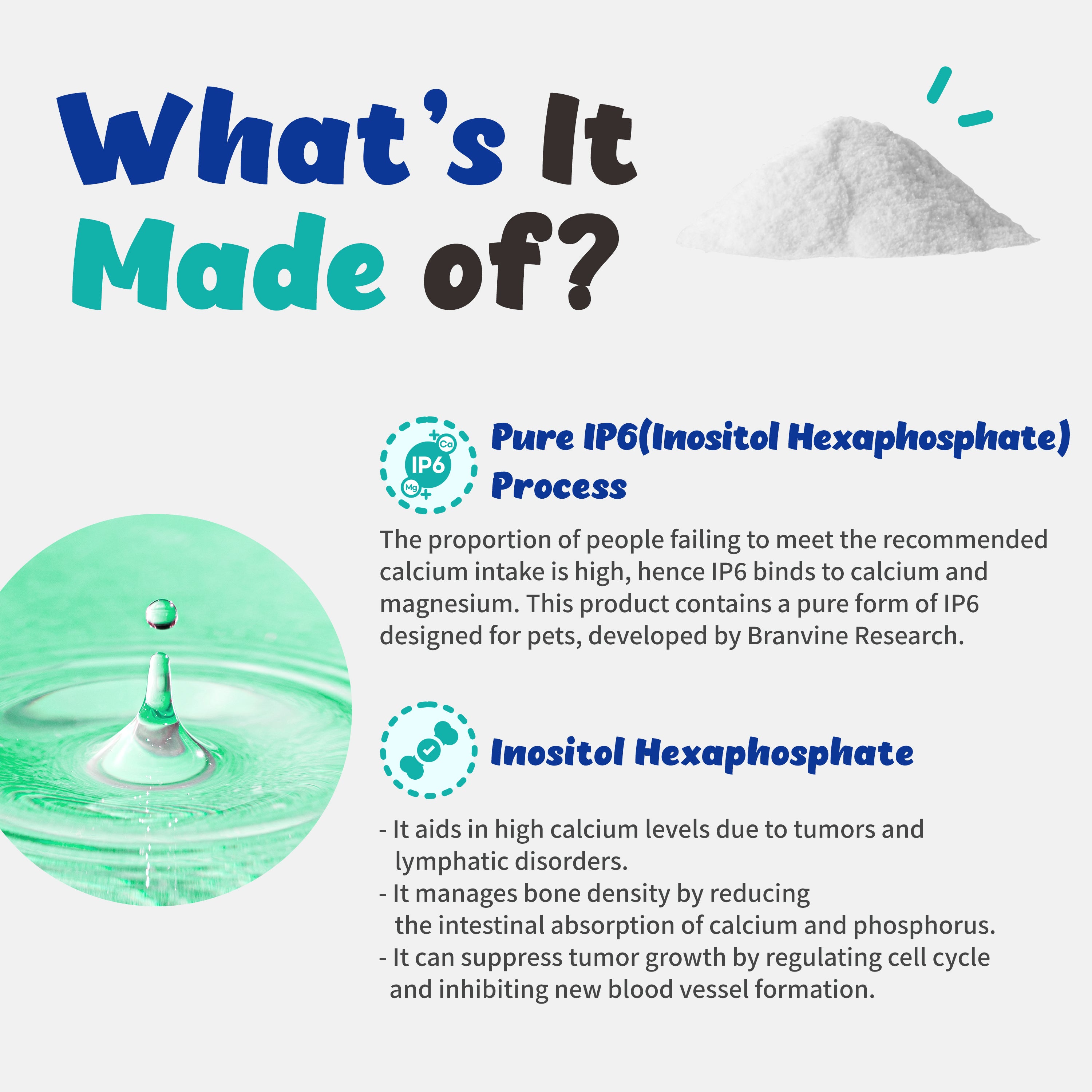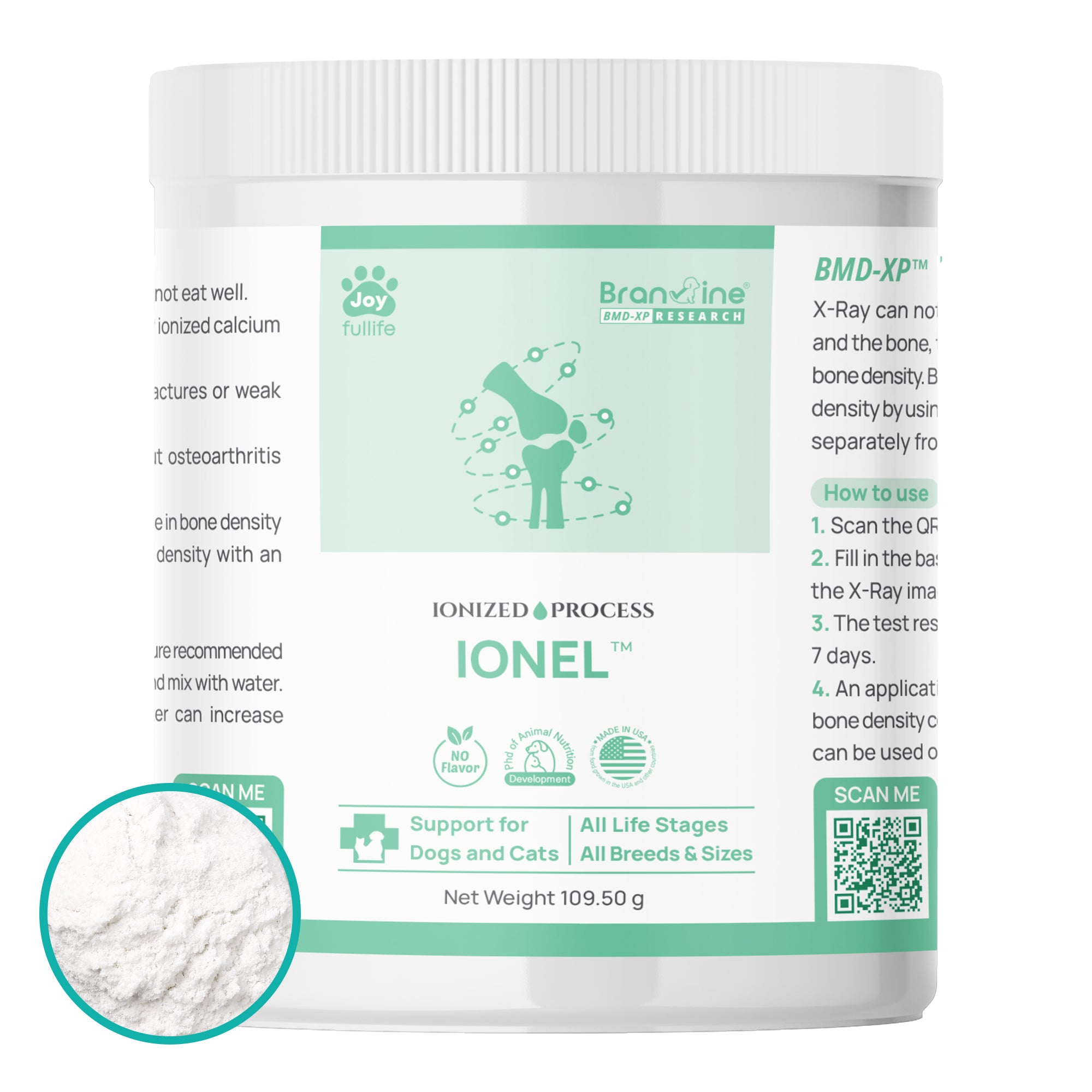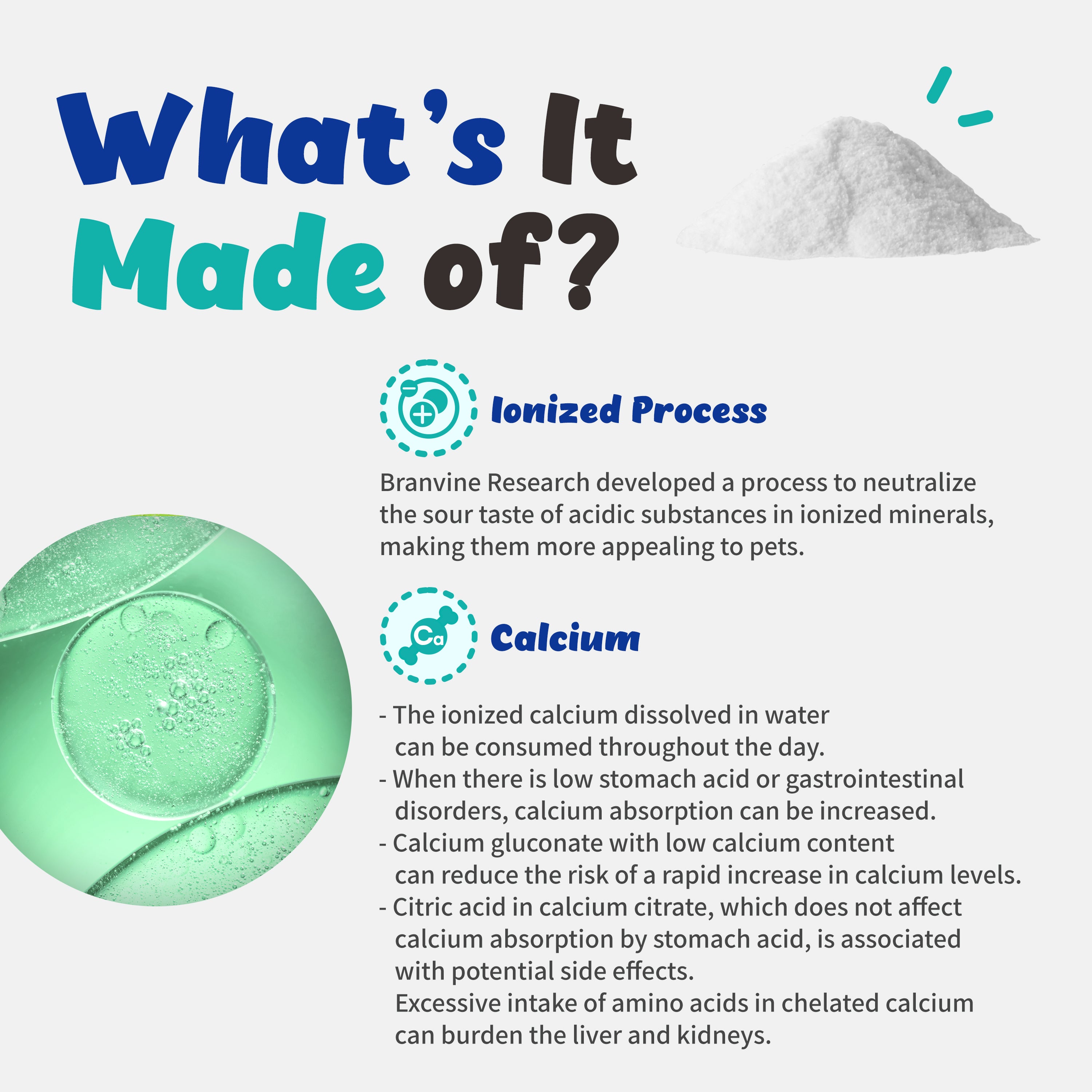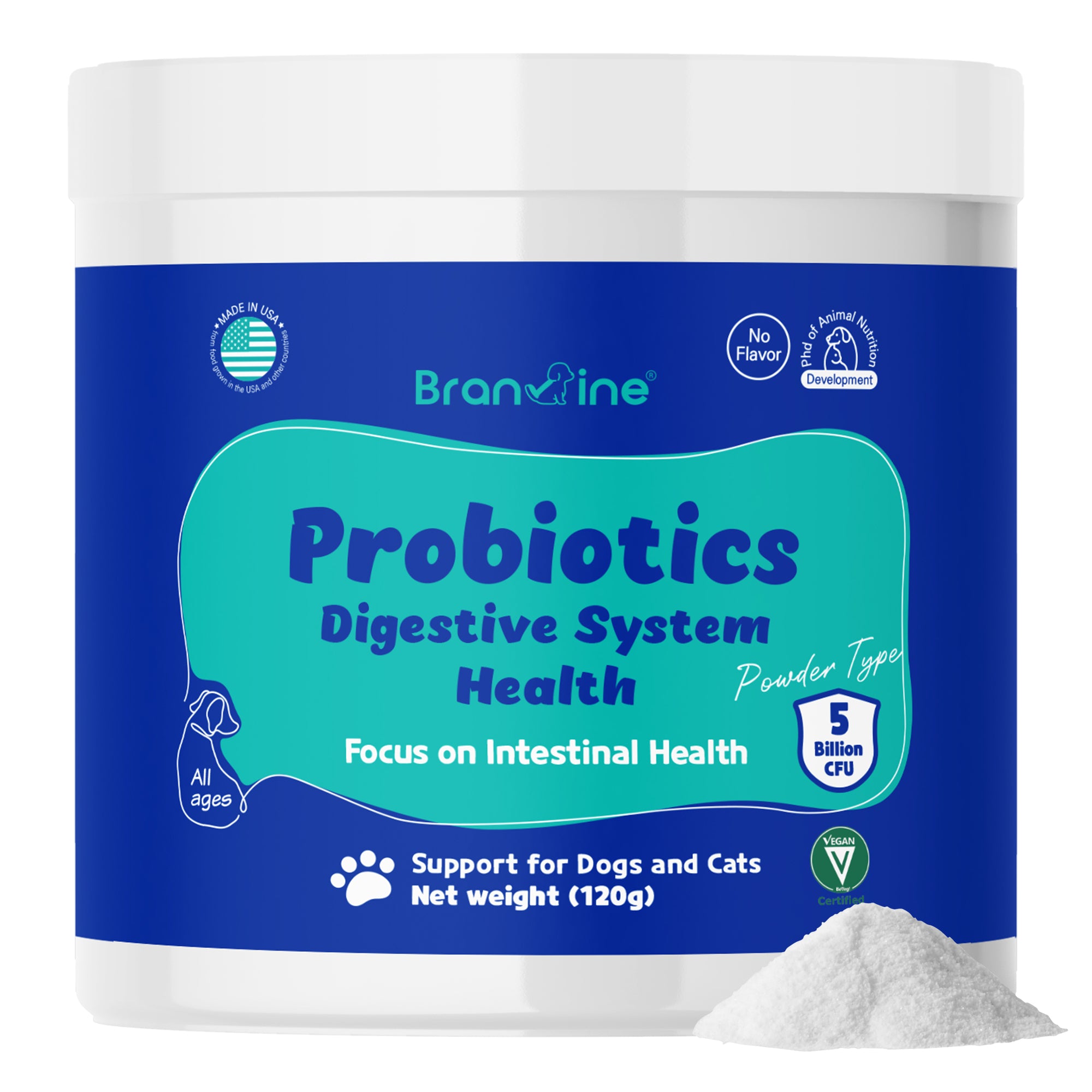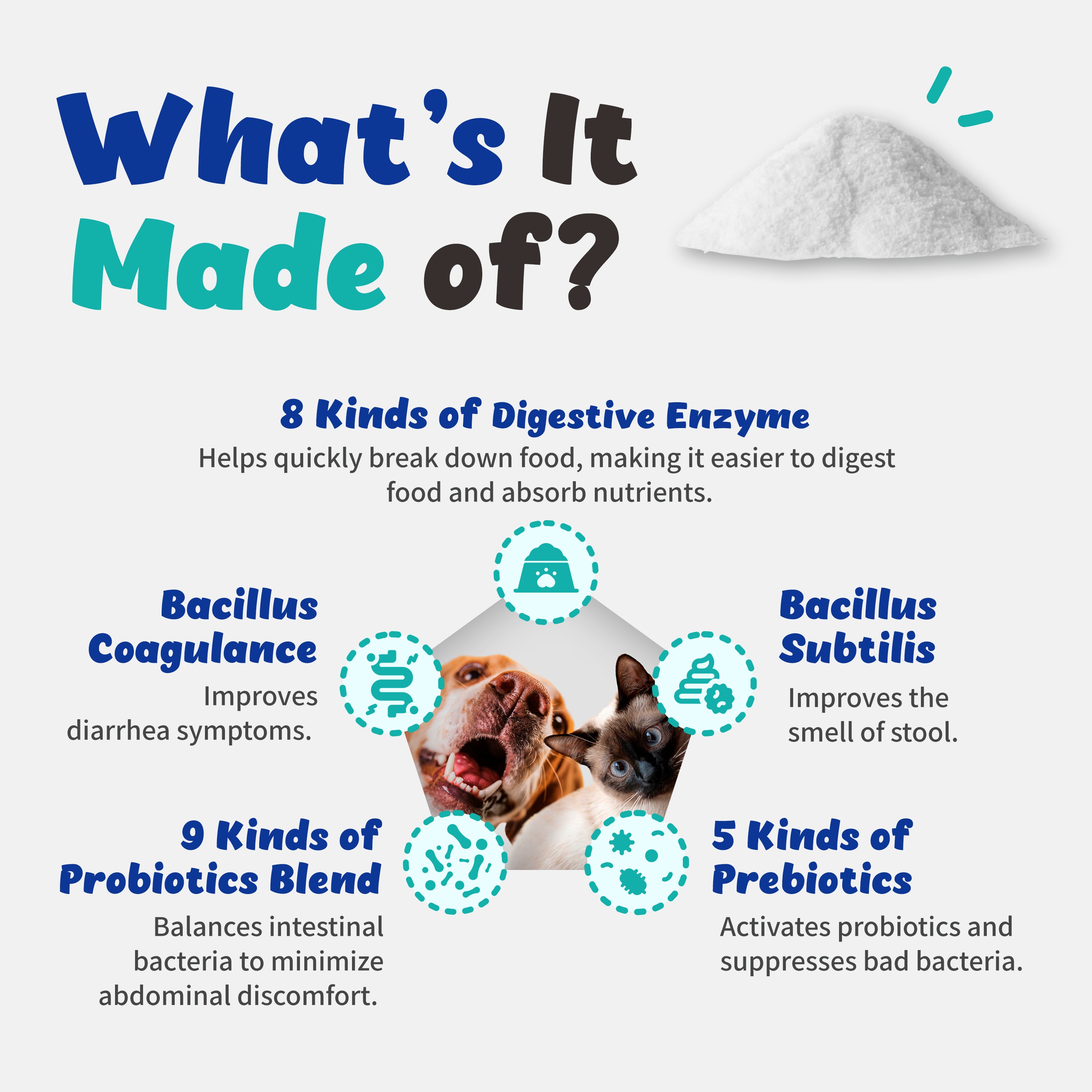Scientific and Effective
-
Immune Support & Gut Health for Sensitive, Young, or Senior Cats and Dogs (30ml)17 reviews
- Regular price
- $25.90 USD
- Regular price
-
- Sale price
- $25.90 USD
- Unit price
- / per
- ● There are pets that refuse soft chew ad powder type. This product can help se... -
Organic Hemp Seed Oil - Comprehensive Support for Dogs and Cats (30ml)16 reviews
- Regular price
- $36.90 USD
- Regular price
-
- Sale price
- $36.90 USD
- Unit price
- / per
- ● The endocannabinoids system serves to help keep the homeostasis in optimum c... -
Heart Alive - Cardiovascular Health of Cats and Dogs (60ml)3 reviews
- Regular price
- $34.90 USD
- Regular price
-
- Sale price
- $34.90 USD
- Unit price
- / per
- ● The cardiovascular system consists of the heart which pumps blood and the blood ... -
Oral and Digestive System Health for Dogs (90 Chewables)15 reviews
- Regular price
- $34.90 USD
- Regular price
-
- Sale price
- $34.90 USD
- Unit price
- / per
- ● Supports Oral and Digestive Health - The digestive system and oral health ar... -
Respiratory Guardian - Supports Coughing, Runny Nose, Sinus for Dogs (135g)3 reviews
- Regular price
- $35.90 USD
- Regular price
-
- Sale price
- $35.90 USD
- Unit price
- / per
- ● As a product for dogs suffering from rhinitis, sinusitis, asthma, cough, tracheal ... -
Respiratory Guardian - Supports Coughing, Runny Nose, Sinus for Cats (117g)2 reviews
- Regular price
- $32.90 USD
- Regular price
-
- Sale price
- $32.90 USD
- Unit price
- / per
- ● As a product for cats suffering from rhinitis, sinusitis, asthma, cough and bacteria...
1
/
of
-
Recogry Cognitive Disorder and Brain Support for Cats and Dogs (90ml)No reviews
- Regular price
- $38.90 USD
- Regular price
-
- Sale price
- $38.90 USD
- Unit price
- / per
Enjoy a Healthy Life in Old Age! With advances in veterinary nutrition, the life... -
Urinary Guardian Vitamin A - Supports Kidney, Bladder, Cushing for Cats and Dogs (117g)No reviews
- Regular price
- $34.90 USD
- Regular price
-
- Sale price
- $34.90 USD
- Unit price
- / per
- ● Due to the high protein requirements of cats and dogs, the kidneys constantly filter... -
Urinary Guardian Vitamin B5 - Supports Kidney, Bladder, Addison for Cats and Dogs (117g)No reviews
- Regular price
- $34.90 USD
- Regular price
-
- Sale price
- $34.90 USD
- Unit price
- / per
- ● Due to the high protein requirements of cats and dogs, the kidneys constantly fil... -
Joint Guardian - Supports Joint, Muscle and Ligament for Cats and Dogs (220.50g)11 reviews
- Regular price
- $35.90 USD
- Regular price
-
- Sale price
- $35.90 USD
- Unit price
- / per
This product primarily supplements collagen, which is a key component of bones and muscl... -
INOEL-6 for Cats and Dogs - Bone Density, Joint and Tumor (87.50g)No reviews
- Regular price
- $38.90 USD
- Regular price
-
- Sale price
- $38.90 USD
- Unit price
- / per
Other brands' bone and joint products simply supplement their ingredients, resulting in... -
IONEL for Cats and Dogs - Bone Density, Joint and Fracture (109.50g)No reviews
- Regular price
- $38.90 USD
- Regular price
-
- Sale price
- $38.90 USD
- Unit price
- / per
Other brands' bone and joint products simply supplement their ingredients, resulting i...
1
/
of
-
Immune Support & Gut Health for Sensitive, Young, or Senior Cats and Dogs (30ml)17 reviews
- Regular price
- $25.90 USD
- Regular price
-
- Sale price
- $25.90 USD
- Unit price
- / per
- ● There are pets that refuse soft chew ad powder type. This product can help se... -
Oral and Digestive System Health for Dogs (90 Chewables)15 reviews
- Regular price
- $34.90 USD
- Regular price
-
- Sale price
- $34.90 USD
- Unit price
- / per
- ● Supports Oral and Digestive Health - The digestive system and oral health ar... -
Improving Diarrhea, Constipation and Stool Odor for Cats and Dogs (120g)3 reviews
- Regular price
- $31.90 USD
- Regular price
-
- Sale price
- $31.90 USD
- Unit price
- / per
- ● A complex functional formula of live probiotics, dead probiotics, digestiv...
1
/
of
We Deliver Worldwide

Customs Clearance
Our product is animal-free, no customs issues

24/7 Support
Please contact us by email or message.

100% Satisfaction Guarantee
From Europe, Asia, North and Central America, and South America
Messanger Information









